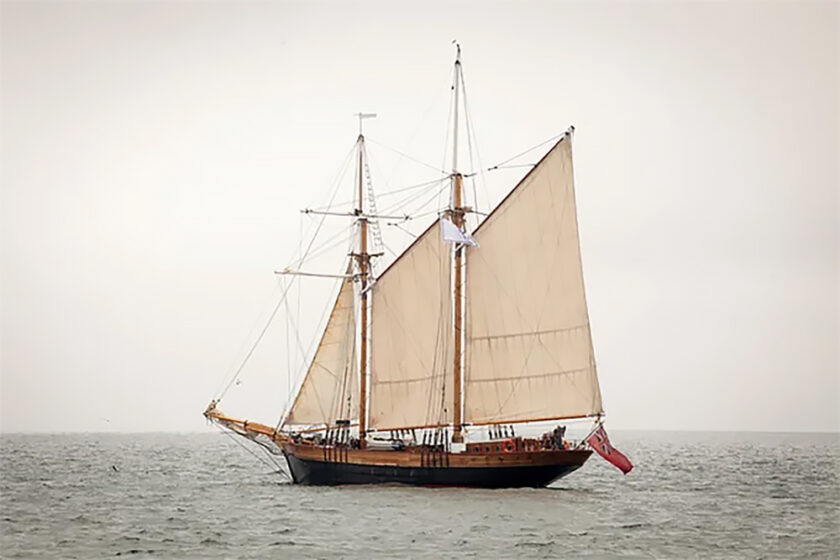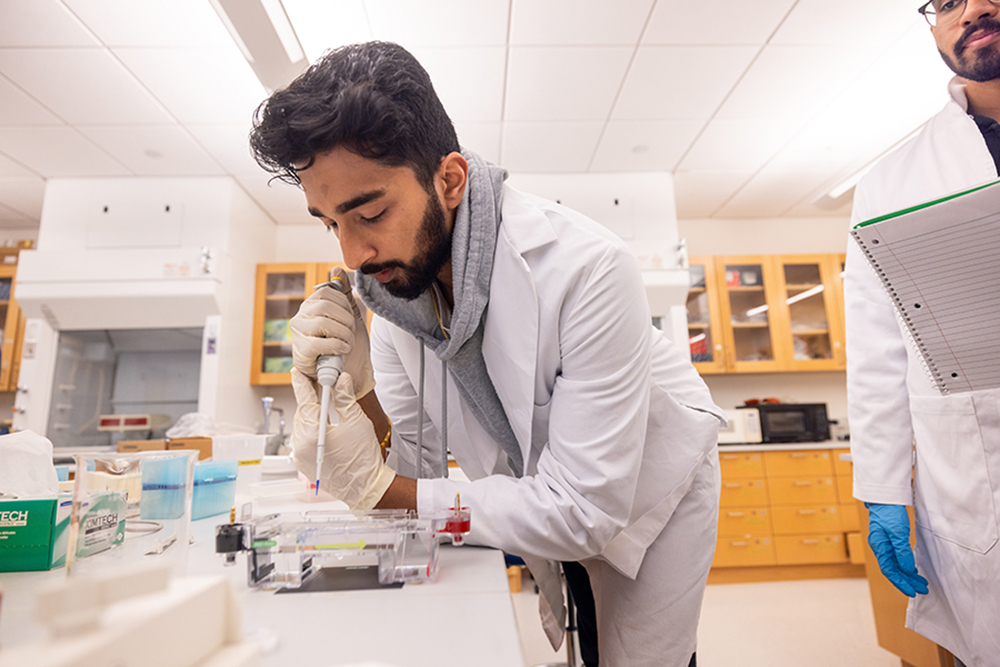For decades, beachgoers along South Jersey’s picturesque coastline stumbled upon scattered human bones, an eerie reminder of an unsolved mystery. What story could these remains tell? This question puzzled investigators for nearly 30 years — until now.
Thanks to cutting-edge genetic genealogy and the dedication of forensic experts, the skeletal fragments have been identified as belonging to a 19th-century ship captain whose ill-fated voyage ended in tragedy just off the coast of Brigantine in 1844.
The Oriental was transporting approximately 60 tons of marble for the construction of Girard College in Philadelphia when it encountered disaster. Departing from Connecticut, the schooner began to take on water near Brigantine Shoal.
Despite efforts to save the vessel, it sank about a mile from the shore, killing all five crew members aboard. Reports from The York Democratic Press and Boston Daily Bee documented the tragedy, noting that only one body — a crew member named John Keith — was recovered at the time.
The ship’s cargo of marble was meant to form part of the architectural grandeur of Girard College, a prestigious boarding school that would later open its doors in 1848. Historical records indicate that work on the facility continued, albeit under challenging circumstances, after The Oriental’s demise.
The mystery began in 1995, when a skull was found on the beach in Longport. Over the next two decades, additional bones surfaced: in Margate in 1999 and in Ocean City in 2013. Due to the scattered locations, investigators referred to the remains as “Scattered Man John Doe.”
Having made little progress, the New Jersey State Police partnered with the Ramapo College Investigative Genetic Genealogy Center (IGG) in 2023 to revisit the case. Genetic material was sent to Intermountain Forensics, a Salt Lake City-based nonprofit specializing in using DNA to identify human remains.

near Brigantine Shoal.
The lab extracted and uploaded the genetic profile to genealogy databases, including GEDmatch and FamilyTreeDNA, for comparison. This approach marked a significant turning point in the investigation.
The forensic lab played a pivotal role in unraveling the mystery. Using advanced DNA extraction techniques, scientists isolated viable genetic material from the remains — no small feat, given their exposure to harsh environmental conditions over nearly two centuries.
These efforts utilized next-generation sequencing (NGS), a technology capable of reading fragmented DNA and reconstructing enough of the genetic profile to enable comparisons.
The genetic data revealed matches linking the remains to living descendants. Through a process known as genetic triangulation, forensic genealogists pinpointed shared DNA segments among relatives, narrowing down the lineage to Henry Goodsell.
Historical documents, including ship manifests and 19th-century newspaper articles, corroborated these findings, cementing the connection between Goodsell and The Oriental’s ill-fated voyage.
Students at Ramapo College played a vital role in cracking the case. Guided by their professors, they researched Goodsell’s ancestry, tracing his family line back to the 1600s in Connecticut. Alongside this genealogical work, the team delved into historical accounts of shipwrecks along the South Jersey coast, ultimately uncovering references to The Oriental in periodicals like The York Democratic Press and Boston Daily Bee.
The students’ findings highlighted the ship’s tragic final moments in December 1844, when it sank approximately 1 mile from Brigantine Shoal. This evidence laid the groundwork for confirming Goodsell’s identity through genetic analysis.
Further investigation included genetic sampling from Goodsell’s great-great-grandchild. By April 2025, authorities confirmed that the remains belonged to Captain Henry Goodsell, making it one of the oldest cold cases solved through genetic genealogy.
“Identifying human remains is one of the most solemn and challenging responsibilities law enforcement is charged with,” said Patrick Snyder, chief of county detectives at the Atlantic County Prosecutor’s Office. “This case reaffirms our commitment to ensuring that no one is forgotten and that we seek the truth for families.”
New Jersey State Police Superintendent Patrick Callahan echoed these sentiments, emphasizing the power of modern genealogy testing to bring closure even generations after a tragedy. “Our partnership with Ramapo College has been instrumental in making this possible, and we are incredibly proud of the meaningful progress we continue to make together,” Callahan said.
The Oriental’s marble cargo was intended for Girard College, which opened in 1848 despite the shipwreck. Records show that construction continued actively just months after the disaster, with workers finding alternative means to complete the project.
This case not only solved a long-standing mystery, but it also highlighted the potential of genetic genealogy in uncovering historical truths. Cape May County Prosecutor Jeffrey Sutherland praised the collaboration, stating, “This work reveals a piece of South Jersey history while demonstrating the power of combining modern technology with traditional investigative methods.”
The use of consumer DNA testing platforms like GEDmatch and FamilyTreeDNA has revolutionized cold case investigations. However, it also raises important ethical questions about privacy and consent. Experts in the field, including those at Ramapo’s IGG, have called for transparent guidelines to balance the benefits of genetic genealogy with respect for individual rights.
The Goodsell case underscores how public cooperation and responsible use of DNA databases can lead to groundbreaking discoveries. As more individuals opt to share their genetic information, investigators gain invaluable tools for solving mysteries once thought unsolvable.
Ramapo College’s genealogy center has been instrumental in solving numerous cold cases, including identifying partial remains in other parts of New Jersey. Since its launch in late 2022, the program has consulted on 92 cases and successfully identified more than a dozen human remains nationwide.
“The combination of cutting-edge science and meticulous detective work provides hope that other cold cases, even those thought unsolvable, may eventually yield answers,” said a spokesperson for the genealogy center.
Goodsell’s story, however, resonates deeply with South Jersey residents, tying together local history, maritime tragedy and scientific innovation.
The identification of Captain Henry Goodsell brings a sense of closure to a mystery that spanned nearly two centuries. For the families connected to this story, it’s a testament to the enduring power of science and determination. For South Jersey, it’s a poignant reminder of the region’s rich maritime history and the resilience of its communities.













